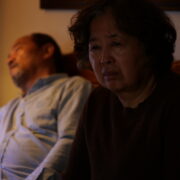Comparing Companions: How Fantasy Handles Its Creatures
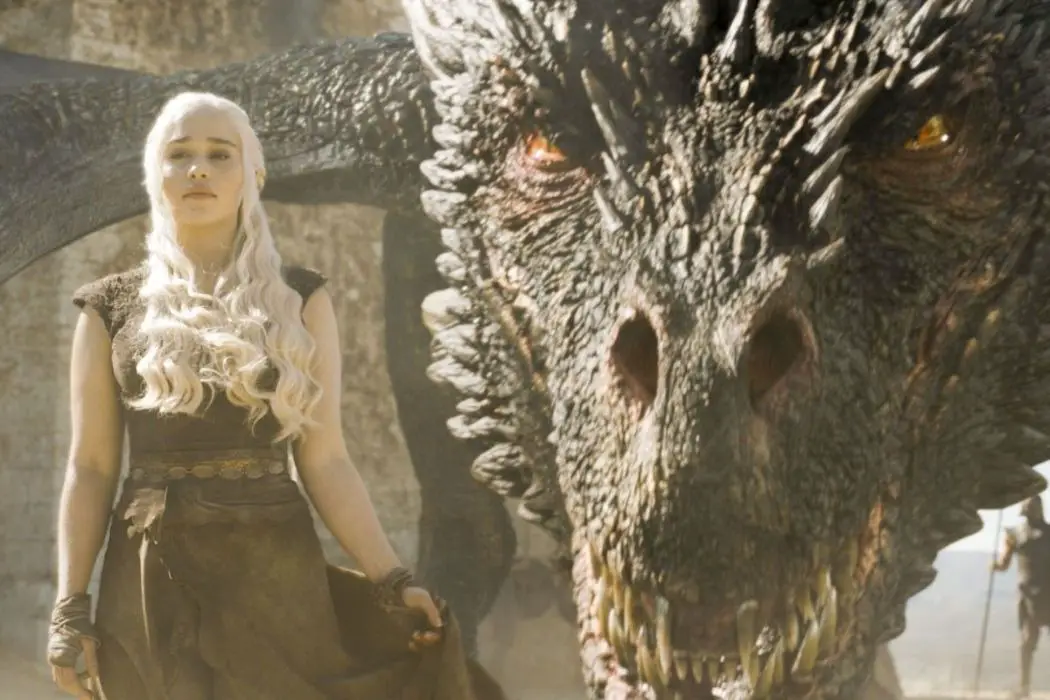
If favourite films tell you all you need to know…
When it comes to tales of epic fantasy, tales not unlike a certain HBO phenomenon drawing to a close this year, nothing makes the journey of a foretold destiny sweeter than the companionship built between a righteous hero and their trusty creature companion.
Through the analyses of select cases, certain parallels can be drawn between the different examples of hero-creature sidekick relationships, posing the question: can the genre work without this inherent bond at the forefront of a story? And would we even want it to?
The bond between a hero and their, rarely pivotal, critter is often at the heart of a story, yet seems to struggle when it comes to integral story input, but is there more to these sidekicks than meets the eye? Let’s talk owls, dragons, and everything in-between as we dive into the fantastical world of epic pet care, a task synonymous with genres hellbent on forcing their protagonists through a lens of companionship, reliability and all-round heroism.
Companionship is often the driving force in moments of wild fantasy, and yet rarely attributed to the overarching story and its conclusion, so are we selling this bond short? And is the key to a journey of fantastical discovery far more reliant on this affiliation than it may seem? Let’s find out!
When it comes to mythical counterparts and their heroic owners, no genre finds itself rooted in companionship quite like the ever-shifting plates of fantasy, a landscape often built on said partnerships and their contribution to story, character, and our critical opinion as an audience.
But What Makes A Great Creature Companion?
Besides existing as constant friendship hubs, the creatures populating our quests are often working on a number of subconscious plateaus, putting in overtime to ensure character qualities are visible in moments of development and personal elaboration.
Whilst differing slightly depending on the specific circumstances and/or character functionality, a number of story highlights could absolutely be attributed to these plucky companions and the qualities they bring to the table, namely those of our titular role. Oftentimes, the animals accompanying our heroes exist as vehicles of personal growth, allowing for moments of maturity, instinct, and friendship, suggesting opinions concerning the lead be directed slightly in one way or another.
The rarity of these creatures having some level of overwhelming input on plot and/or story can’t be disputed, and must absolutely be highlighted moving forward, as it could be argued that major plot points would occur completely unchanged without their counsel.
However, an attribute these furry sidekicks do bring in abundance thrives in moments of the mundane, serving as a totem of genre when the fantastical begins to slip, reaffirming the world in which they exist and reminding the audience of the landscape the story is battling through.
Outside of beating their magical wings, these adorable pets can often be found taking a well-earned break from talon sharpening to embody significant traits of their titular owner, serving as portals of emotion for the film, a power that raises their character weight to new heights. With this in mind, let’s take a look at a character burdened with prophecy, an almighty reputation, and a winged counterpart to match…
The Boy Who Lived…
The night is cold, the air littered with mystery, a young wizard burdened with prophecy finds solace in Number 4 Privet Drive, a shelter destined to house the earliest years of a fantasy saga responsible for conquering a serious chunk of 2000’s cinematic landscape.
If the address hasn’t sparked a Hogwarts sized light bulb by this point, we’re talking about the one and only Harry Potter, a character blessed with a series lifespan unlike any other, and a woodland counterpart to share the majority of a fantastical journey with.
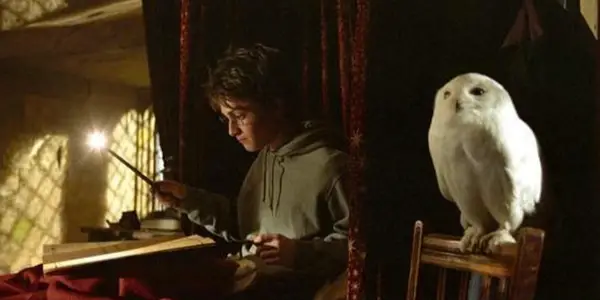
Hedwig, Harry’s trusty snowy owl parcel transporter, enters the fold early on in the saga and sticks around for the majority of the series, proving to be a worthy partner and an incredible feathered friend.
An Almighty Snowy Owl
There’s chambers, there’s secrets, and you can bet there’s a gargantuan reptile roaming the gloomy halls of Hogwarts during Harry’s second school year, all ingredients that don’t scream for delicate character moments, yet somehow Hedwig found time for such a thing in the opening sequence of this franchise instalment.
As we’re reintroduced to the wonderful world of witchcraft and wizardry in which this story takes place, we pan through a suburban window and towards a reminder of Harry’s burden as a young wizard, pet care.
We enter the scene as Harry pans through a photo album, glancing upon an old image of his parents, pondering a life he’ll never have whilst reminding the audience that Harry, when away from Hogwarts, is very much alone. Just as this realisation sets in, Harry turns to the next page of his album, and to an image of him and his school friends, a reminder of his time at Hogwarts that arrives paired with the uncomfortable screeches of his caged owl, a moment allowing for Harry’s true identity to be established on screen, connecting Hedwig to our idea of Hogwarts.
This combination allows for a wonderful display of character, as the audience finds themselves subject to a pairing of Harry’s reconciliation attempts and the creatures wild nature, mirroring Harry’s desire to return to Hogwarts from behind the bars of her domed birdcage.
The Courage Of A Creature
Now, before continuing, take this as a cordial spoiler warning for the Harry Potter franchise as a whole (if you’ve somehow managed to avoid this saga’s presence).
In the first instalment of the Deathly Hallows escapades, Hedwig sadly meets her untimely end, and would you believe it? Her fate befalls her as she finds herself protecting Harry, losing her life to the dastardly death eaters and their wicked ways (grrr).
It doesn’t feel like any kind of groundbreaking surprise that this act is what costs Hedwig her life, as her existence in Harry’s past has very much been in service of the titular character’s courage and bravery. It feels justified that Hedwig’s final act is a lasting embodiment of Harry’s most prominent traits, a glimmer of strength as her life ends, saving Harry and proving how powerful magic can be, one last time.
Much like the mirroring of the before mentioned scene, Hedwig’s death reminds the audience of Harry’s constant bravery, allowing for a small moment of symbolism as the trusty owl displays the shared traits of both herself and her owner.
It’s All Just Fantasy
On a slightly less harrowing note, let’s return to the early instalments of Hedwig’s winged legacy, a time when magic was very much still a fresh concept to Harry, and every new suggestion of wizardry amazed the young wizard, as well as us audience members.

In a scene that highlights Harry’s innocence in this newfound world of magic, The Philosophers Stone allows for a moment of mundanity, briefly taking a break from transfiguration classes and three-headed guard dogs to allow the audience a moment of stillness.
We see Harry strolling purposefully through a Hogwarts courtyard, Hedwig resting calmly on his arm, and for a moment the chaos of this new world seems nullified. Almost muted. As the magic stops to breathe for a brief moment, Hedwig takes flight, climbing above the cobbled rooftops of the surrounding buildings, leaving Harry grounded. The snowy owl soars, seasons shifting around her, signifying a passing of time whilst simultaneously acting as a doorway to the magical world, storming us back down to earth and into this world of fantasy.
As accompanying creatures go, Hedwig ranks pretty highly, allowing for subtle character moments, visual representations of her owner’s courage, and a flourishing reminder of the world the story exists in, but how does it compare to fantasy’s other winged beasts? (The fire breathing kind in particular)
Mother Of Dragons
Shift gears to 2011, a brand new fantasy epic (book readers excluded) is about to duel it’s way onto our screens, bringing with it a certain dragon hoarding Targaryen by the name of Daenerys, a Khaleesi worthy of the Iron Throne as well as a whole host of Dothraki drama.
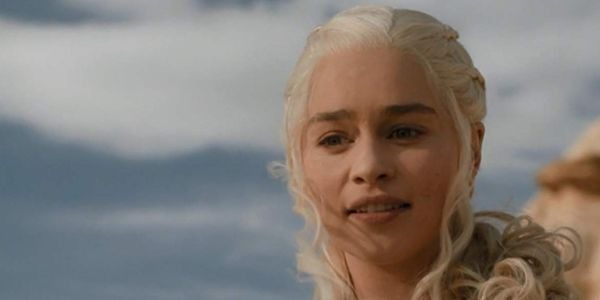
Joining the Mother of Dragons on her almighty quest through Game Of Thrones are Drogon, Viserion, and Rhaegal, three dragons sworn to protect their power-driven queen on her quest for the realm. Due to the series spanning a fairly large amount of real-world time, the scaled security liberally share their growth spurts with the audience, allowing for a serious amount of character development, genre definition, and trait embodiment.
A True Targaryen
Arriving at a pivotal time in the series, the conclusion of season one sees the birth of Khaleesi’s reptilian trio, emerging from their Jurassic pods in a blaze of glory whilst we come to terms with the shows first real fantastical stance.
As the dragons rise from the flames surrounding Daenerys, an air of fury rises around her and the queen is gifted a real presence, possibly due to the flying flamethrowers taking up the shot? Hard to tell.
It’s in this moment the Mother of Dragons feels strongest as if the Khaleesi is rising from the flames a true queen, an instance of character growth gifted by her creatures of myth.
A Winged Echo Chamber
Fast forward six seasons and those newborn dragons are now mighty instruments of war, towering above all else and making a real name for themselves, mainly thanks to the figurehead of power their mother has since become.
Through a number of trials and plot points, all involving seven kingdoms — did we mention? — the dragons have found themselves caged animals, locked in chains and deprived of their almighty reputation, rendering them mythical creatures devoid of function.
In a sequence filled with symbolic retrospect, Tyrion Lannister, current ally of the queen, approaches the dragons and releases them of their constraints, setting the almighty beasts free to use their power in any way they see fit.
This moment serves as an incredibly effective echo chamber for character development, allowing the dragons to embody the spirit of their mother. Much like their birth granting Khaleesi the power she needs to claim the Iron Throne, this act gifts the dragons their deserved might, reverberating a character arc responsible for driving a huge chunk of the entire show and reminding the audience of the power Daenerys still possess.
Dracarys…
Whilst the rest of Westeros proceeds with its tyrannical plot points, the Mother of Dragons slowly integrates herself into the more pivotal areas of storytelling, becoming more and more relevant by the episode. In an act of power, Khaleesi begins her march on a number of fantastical landmarks, storming castles and taking thrones, all through the strength of her amassed armies.
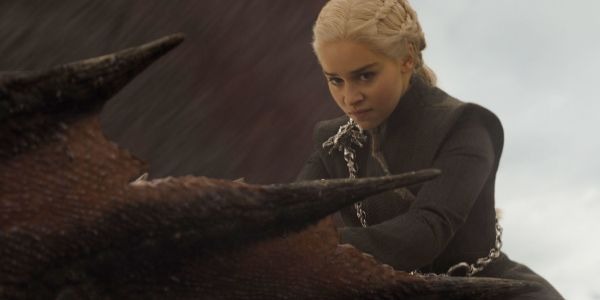
As the Lannister forces gather, an army rages forward, comprised of Khaleesi’s troops, charging with intent and rageful conviction. In a sequence lacking any real incomprehensible fantasy, the scene is thrown into an almighty vacuum of myth as Drogon, Daenerys’ most poignant dragon, roars overhead, laying waste to any and all between the pair’s goal.
With this thrust of fantasy bringing the scene back to its mythical roots, the dragon trio manages to showcase the strength and emotivity of creatures as such, succeeding in their role as fictitious counterparts.
Conclusion: A Fantastical World Of Epic Pet Care
With both Hedwig and Khaleesi’s dragons showcasing the same qualities in differing manners, it seems as if it’s the sheer adaptability of these creatures that proves their worth in fictional storytelling, working as vehicles of character development, emotivity, and genre establishment.
Whilst Hedwig shone in moments of characterisation and world-building, the dragons endeavoured to highlight Khaleesi’s journey regardless of how far the plot has progressed, all qualities vital to storytelling in any genre, let alone fantasy epics.
Certainly one could absolutely argue the dragon’s had a larger impact on their respective narrative, for the majority of the story they play a similar role to Hedwig, working tirelessly to bring genre, character, and emotion to the fantasy on screen.
With all these capabilities shining through, it certainly feels as if the fantasy genre knows exactly how to handle its creatures, and just what makes these companions so worthy of screen time. Every moment of fantasy delivered by these creatures plays a huge role in what audiences expect of the genre, and this mythical pocket of cinema certainly feels all the better for it.
Which other moments of fantasy highlight the true storytelling power of creature companions? And is it time they received their deserved credit? Let us know in the comments below!
Does content like this matter to you?
Become a Member and support film journalism. Unlock access to all of Film Inquiry`s great articles. Join a community of like-minded readers who are passionate about cinema - get access to our private members Network, give back to independent filmmakers, and more.
If favourite films tell you all you need to know of a person, then let Gremlins, Dumb and Dumber and 500 Days Of Summer inform your decision's infinitely.


